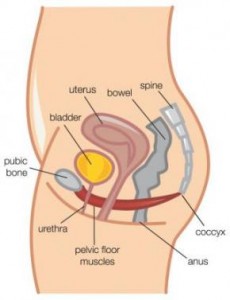Kegel exercises are a series of pelvic muscle exercises designed to strengthen the muscles of the pelvic floor. Dr. Arnold Kegel developed Kegel exercises in 1948 as a method of controlling incontinence in women after childbirth.
Who Should Practice Kegel Exercises?
These exercises are mainly recommended for:
- Women with urinary stress incontinence
- Some men who have urinary incontinence after prostate surgery
- People who have fecal incontinence
Kegel exercises strengthen the muscles of the pelvic floor to improve urethral and rectal sphincter function. The success of Kegel exercises depends on proper technique and sticking to a regular exercise program.
Tips For Learning Kegel Exercises
Tip #1: Find The Right Muscle Group
Some people have trouble finding and isolating the muscles of the pelvic floor. It’s important to learn how to tighten (contract) the correct muscles, because most people contract the abdominal or high muscles, and don’t work the pelvic floor muscles. Such incorrect contractions can worsen pelvic floor tone and incontinence.
Several techniques can help you find the right muscles. One approach is to practice working the muscles during urination. Try to stop the flow of urine midstream by tightening your pelvic floor muscles. Repeat this action several times until you learn the feel of contracting the right group of muscles. You should not contract your abdominal, thigh, or buttocks muscles while doing this exercise.

Another approach that can help you find the correct muscle group is by inserting a finger into the vagina (in women), or rectum (in men). Try to tighten the muscles around your finger, quite like how you would if you were holding back urine. The abdominal and thigh muscles should stay relaxed during this exercise too.
Women can strengthen these muscles by using a vaginal cone, which is a weighted device that can be inserted into the vagina. The device can be held in place by contracting the pelvic floor muscles.
Tip #2: Use Biofeedback For Better Results
If you are unsure whether you are doing the Kegel exercises correctly, you can use biofeedback and electrical stimulation to help find the correct muscle group to work.
Biofeedback is a method of positive reinforcement. Electrodes are placed on the abdomen and along the anal area. Some Physiotherapists place a sensor in the vagina in women or anus in men, to monitor the contraction of pelvic floor muscles.
A monitor will display a graph showing the muscles that are contracting and the ones that are at rest.
Physiotherapists can help find the right muscles for performing Kegel exercises through electrical stimulation. This involves using low-voltage electric current to stimulate the correct group of muscles. The current may be delivered using an anal or vaginal probe. Such therapy can be done in the physiotherapist’s clinic.
Treatment sessions usually last 20 minutes and may be carried out every 1 – 4 days. Some studies have shown that electrical stimulation might help in treating stress and incontinence.
How To Perform Kegel Exercises
- Begin by emptying your bladder
- Tighten the pelvic floor muscles and hold for a count of 10
- Relax the muscles completely for a count of 10
- Repeat this routine 10 times, thrice a day (morning, afternoon, and night)
You can do these exercises at any time and any place. Most people prefer to do the exercise while lying down or sitting in a chair. After 4 – 6 weeks, you might notice some improvement over urinary or fecal incontinence. It may take as long as 3 months to see any major change.
While learning Kegel exercises, it is important to have a realistic view about the results. It is also important to learn the exercises from a physiotherapist, because contracting the wrong muscles might give rise to other conditions or body pain.